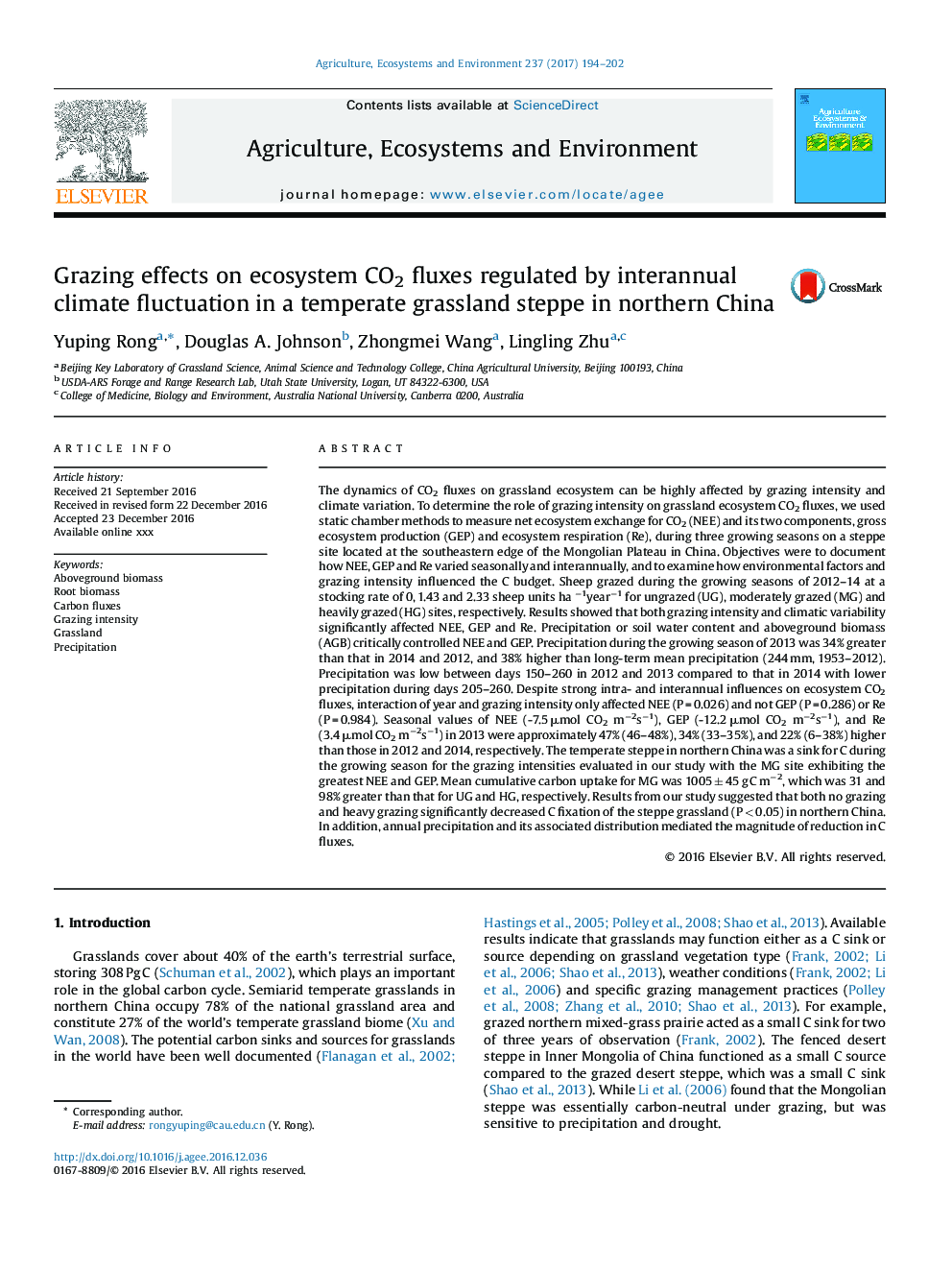| Article ID | Journal | Published Year | Pages | File Type |
|---|---|---|---|---|
| 5538232 | Agriculture, Ecosystems & Environment | 2017 | 9 Pages |
Abstract
The dynamics of CO2 fluxes on grassland ecosystem can be highly affected by grazing intensity and climate variation. To determine the role of grazing intensity on grassland ecosystem CO2 fluxes, we used static chamber methods to measure net ecosystem exchange for CO2 (NEE) and its two components, gross ecosystem production (GEP) and ecosystem respiration (Re), during three growing seasons on a steppe site located at the southeastern edge of the Mongolian Plateau in China. Objectives were to document how NEE, GEP and Re varied seasonally and interannually, and to examine how environmental factors and grazing intensity influenced the C budget. Sheep grazed during the growing seasons of 2012-14 at a stocking rate of 0, 1.43 and 2.33 sheep units ha â1yearâ1 for ungrazed (UG), moderately grazed (MG) and heavily grazed (HG) sites, respectively. Results showed that both grazing intensity and climatic variability significantly affected NEE, GEP and Re. Precipitation or soil water content and aboveground biomass (AGB) critically controlled NEE and GEP. Precipitation during the growing season of 2013 was 34% greater than that in 2014 and 2012, and 38% higher than long-term mean precipitation (244 mm, 1953-2012). Precipitation was low between days 150-260 in 2012 and 2013 compared to that in 2014 with lower precipitation during days 205-260. Despite strong intra- and interannual influences on ecosystem CO2 fluxes, interaction of year and grazing intensity only affected NEE (P = 0.026) and not GEP (P = 0.286) or Re (P = 0.984). Seasonal values of NEE (-7.5 μmol CO2 mâ2sâ1), GEP (-12.2 μmol CO2 mâ2sâ1), and Re (3.4 μmol CO2 mâ2sâ1) in 2013 were approximately 47% (46-48%), 34% (33-35%), and 22% (6-38%) higher than those in 2012 and 2014, respectively. The temperate steppe in northern China was a sink for C during the growing season for the grazing intensities evaluated in our study with the MG site exhibiting the greatest NEE and GEP. Mean cumulative carbon uptake for MG was 1005 ± 45 g C mâ2, which was 31 and 98% greater than that for UG and HG, respectively. Results from our study suggested that both no grazing and heavy grazing significantly decreased C fixation of the steppe grassland (P < 0.05) in northern China. In addition, annual precipitation and its associated distribution mediated the magnitude of reduction in C fluxes.
Related Topics
Life Sciences
Agricultural and Biological Sciences
Agronomy and Crop Science
Authors
Yuping Rong, Douglas A. Johnson, Zhongmei Wang, Lingling Zhu,
